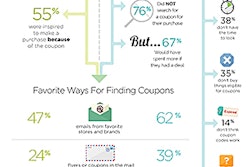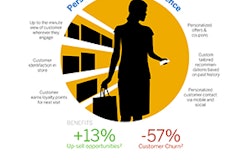New York—Oct. 25, 2013—Genpact Limited, a global company that transforms and runs business processes and operations, unveiled its Volatility and Adaptation Index (VAI), a first-of-its-kind framework that measures indicators of market volatility, as well as the volatility’s consequences for large global companies. The VAI also attempts to anticipate periods of structural adaptation through transformation of operations, such as the increased adoption of advanced operating centers, global shared services or global outsourcing. Genpact monitors volatility—and events reflecting it—as part of its work helping organizations adapt to these challenging times.
“Over the past few years, we have seen an unprecedented stream of company news indicating volatility and, even more importantly, distressed operational metrics across a range of industries. We have observed the correlation between those situations, and the subsequent adaptation and transformation of businesses,” said NV “Tiger” Tyagarajan, president and CEO of Genpact.
During the first half of 2013, Genpact analyzed volatility events, such as profit warnings or the effect of adverse regulatory environments, as well as signals of adaptation, including restructuring plans, acquisitions or geographic expansions. Among the industries displaying high levels of volatility, retail banking and capital markets saw decreases in volatility, while life sciences and consumer packaged goods (CPG) industries saw increases. Industries experiencing high or rising volatility are more likely to initiate structural and operating business adjustments.
Key findings from the Genpact VAI include:
- Aggregate volatility declined slightly between Q1 and Q2 2013.
- More than one-third of all companies monitored reported at least one volatility event.
- Volatility in retail banking is still significantly above the overall average of all industries.
- Manufacturing and CPG have a high percentage of companies showing volatility, but with fewer events per company per quarter.
- Healthcare—payer, provider and life sciences—show a steep rise from Q1 to Q2, suggesting a period of structural operating adjustments is likely to follow.
The VAI is corroborated by Genpact’s own operational measurements derived from the sample of processes and operations the company transforms or manages on behalf of clients as part of transformation and outsourcing agreements. For example, mortgage operations fluctuations in banks, and life sciences’ and CPG’s keen interest in operations transformation services highlight volatility in those sectors.
“Overall, the VAI in the first half of the year showed significant variability across industries,” Tyagarajan added. “Industries that show high but—for a period—decreasing volatility are often more likely to transform their business.”
The Volatility and Adaptation Index, created by Genpact, is a directional, quarterly measure of volatility and signs of adaptation. It was developed through an extensive analysis of nearly 600 companies with $3 billion or more in annual revenue and sizeable operations with the potential to adapt their business’ operating models.
Through its social media analytics group, Genpact monitored publicly available data to identify events that trigger current or future volatility. These events included macro-level, industry-wide events, such as regulations, and company-level events like financial underperformance or cost cutting. The companies spanned a wide range of industries, including retail and commercial banking, insurance, capital markets, healthcare payer and provider, life sciences, manufacturing and CPG. These analyses were “trued up” based on the operational data derived from Genpact’s business process transformation, management and outsourcing footprint across the same industries—from mortgage and procurement to finance and accounting and credit card processing—driven by its proprietary, analytics-driven Smart Enterprise Processes framework.
The first version of the index looked at events spanning January to March and April to June of 2013. The index is updated each quarter, including Q3 data being released at the beginning of November.












